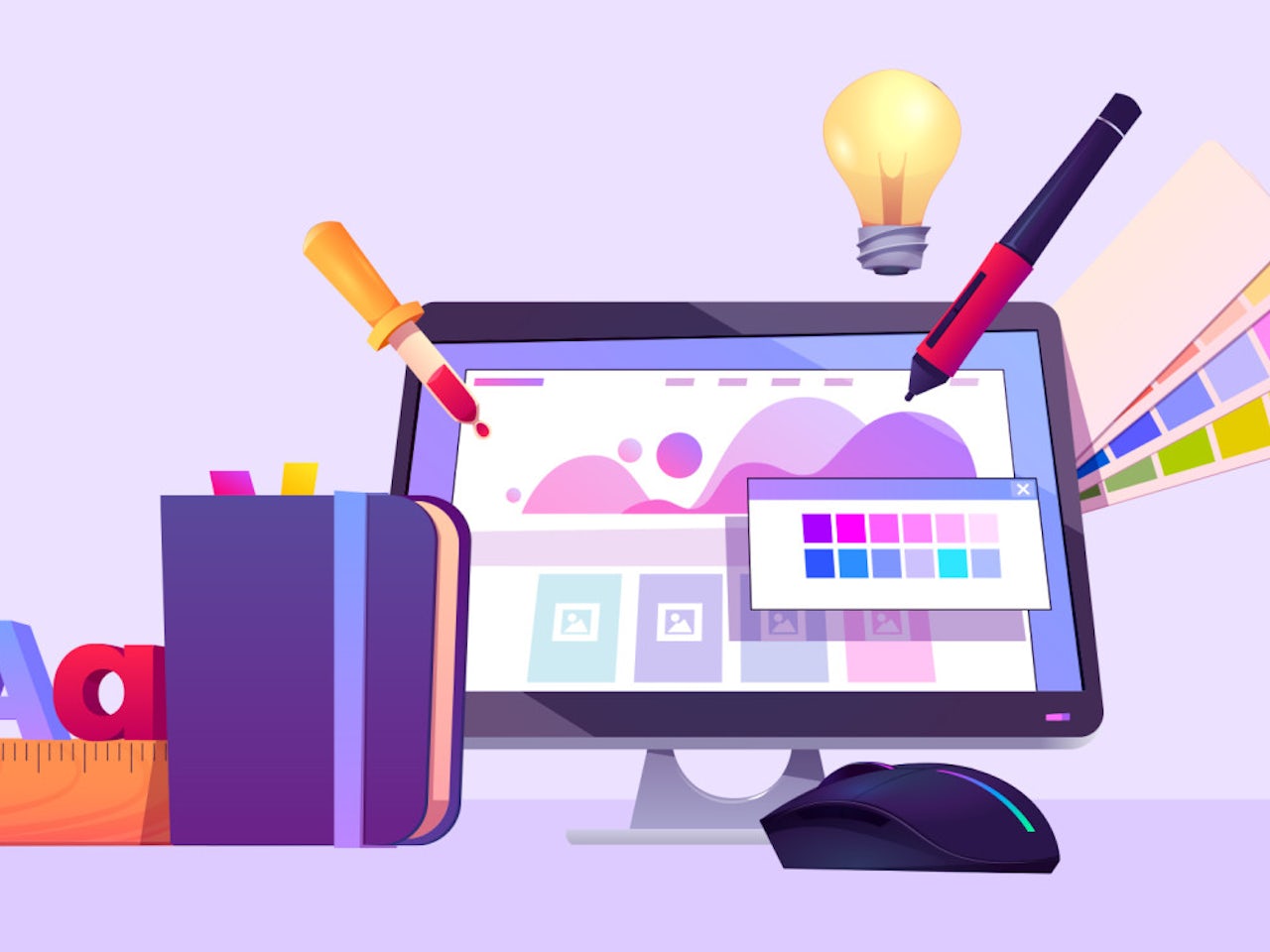The role of feedback and analytics in improving Web Design Agency performance
Wiki Article
The Importance of User Experience in Reliable Web Design Strategies
User experience (UX) works as a cornerstone in reliable web design techniques. It shapes exactly how customers communicate with a website, influencing their contentment and possibility of returning. A properly designed UX can improve involvement through intuitive navigating and responsive formats. Nevertheless, neglecting these aspects might lead to aggravation and increased bounce prices. Understanding the complexities of UX is crucial for designers aiming to produce engaging digital experiences that resonate with varied audiences. What aspects truly drive successful user involvement?Recognizing User Experience and Its Impact on Style
Although user experience (UX) is often perceived as a plain facet of web design, it essentially forms exactly how individuals connect with a site. UX includes all elements of the user's communication, consisting of functionality, access, and overall complete satisfaction. A positive UX cultivates interaction, urging customers to check out the site and return in the future. On the other hand, an unfavorable experience can result in frustration, leading to high bounce prices and lost opportunities for conversion.Design components like navigation, material, and layout company play essential duties in shaping this experience. Reliable UX style anticipates user demands and preferences, ensuring that details is aesthetically attractive and easily accessible. In addition, recognizing user actions with analytics can supply important insights, educating style choices that improve usability. Eventually, a complete understanding of UX enables designers to produce websites that not just attract customers but additionally promote significant communications that align with company objectives and user assumptions.
Trick Concepts of Efficient User Experience
Effective user experience rests on several vital concepts that improve website performance and involvement. Instinctive navigating design, responsive format fundamentals, and the significance of aesthetic hierarchy are essential aspects that add to a seamless communication between individuals and web content. Understanding these concepts enables developers to produce even more available and straightforward digital atmospheres.User-friendly Navigation Style
When customers encounter a website, user-friendly navigating layout acts as an important gateway to their overall experience. Efficient navigation permits customers to easily situate the details they look for, improving their communication with the site. Key concepts consist of clear labeling, rational organization, and constant placement of navigating components. Labels should be simple, enabling individuals to anticipate the web content they will certainly locate. A well-structured power structure assists individuals recognize the partnership in between various areas, leading them through the site seamlessly. In addition, receptive menus and easily obtainable links add to a fluid experience throughout gadgets. By prioritizing instinctive navigating, developers can greatly lower user irritation and boost engagement, inevitably cultivating a favorable perception of the site and its content.Responsive Format Basics
A well-structured navigating system naturally brings about the demand for a responsive design, which is crucial in today's varied electronic landscape. A receptive design assurances that websites function flawlessly throughout numerous tools, including desktop computers, tablet computers, and smart devices. This adaptability enhances user experience by permitting material to be visually meaningful and quickly obtainable, regardless of screen dimension. Trick principles of responsive layout consist of fluid grids, versatile pictures, and media questions, which facilitate optimal watching. In addition, prioritizing touch-friendly components improves interaction on smart phones. By applying a receptive layout, designers can fit users' requirements, decrease bounce prices, and rise engagement. Ultimately, a well-executed responsive style fosters a favorable user experience, urging site visitors to discover the internet site further.Visual Hierarchy Significance
Aesthetic power structure plays a crucial duty in leading users through a web site, guaranteeing that vital details records their focus. By purposefully using size, comparison, shade, and spacing, designers can develop a clear pathway for users to comply with. Bigger elements usually attract the eye, indicating their significance, while contrasting colors can highlight contact us to activity. In addition, constant alignment and group of associated content improve comprehension, making navigation intuitive. Effective use visual power structure not just boosts functionality yet likewise supports the general visual of the website, cultivating a favorable user experience. When individuals can conveniently determine one of the most important information, they are extra most likely to involve with the content, leading to raised contentment and interaction with the website.The Duty of Usability in Web Design
Usability plays an important duty in web design, particularly with navigating simplicity and adherence to access standards. Efficient navigation improves user complete satisfaction by allowing site visitors to find info promptly and intuitively. At the same time, meeting availability criteria guarantees that all individuals, no matter their abilities, can efficiently interact with the website.Navigation Simpleness
Simpleness in navigating stands as a cornerstone of effective web design, greatly affecting user experience. A structured navigation system enables users to find details rapidly and intuitively, decreasing irritation and improving fulfillment. Clear labeling and sensible framework are necessary aspects, guiding individuals easily with the site. Redundant web links or excessively complex menus can confuse users, leading to enhanced bounce rates. In addition, mobile responsiveness needs to be considered, guaranteeing navigation remains uncomplicated throughout gadgets. Prioritizing crucial pages and reducing clutter further supports user involvement. Efficient navigation not just fosters a positive experience but also motivates users to explore the site better, inevitably causing higher conversion rates. Hereof, navigating simplicity works as an essential aspect in the overall performance of web design techniques.Ease of access Criteria
User engagement is substantially improved when internet sites follow accessibility criteria, ensuring that all individuals, no matter their capacities, can navigate and connect efficiently. Conformity with these requirements not just expands the target market however also boosts overall user satisfaction. Obtainable style includes features such as message alternatives for pictures, key-board navigation, and enough shade contrast, which assist in usage by people with handicaps. On top of that, carrying out these criteria can positively affect seo (SEARCH ENGINE OPTIMIZATION) by boosting site structure and clearness. As web design develops, focusing on accessibility comes to be important in fostering an inclusive digital atmosphere. By accepting these criteria, developers contribute to an extra fair web, ultimately driving user loyalty and involvement.Value of Responsive Design for User Engagement
As consumers increasingly access internet sites via a variety of devices, the relevance of receptive layout comes to be critical for engaging customers efficiently. Receptive style assurances that a web site adjusts effortlessly to various display dimensions, providing an excellent viewing experience no matter the gadget made use of. This adaptability boosts user engagement by facilitating easier navigation and communication with content.When customers encounter a website that is responsive, they are most likely to remain longer, explore further, and return in the future. A properly designed receptive design minimizes the aggravation frequently associated with scrolling and zooming on smaller sized screens, thereby reducing bounce prices. Additionally, receptive style can positively influence online search engine rankings, as search engines focus on mobile-friendly web sites. In today's digital landscape, where mobile use remains to climb, carrying out responsive layout is not just useful, yet important for keeping user engagement and assuring a favorable experience throughout all gadgets.
Enhancing Load Times for Better User Complete Satisfaction

To enhance tons times, internet designers must focus on maximizing images, leveraging web browser caching, and lessening HTTP demands. In addition, using Content Delivery Networks (CDNs) can speed up content delivery by distributing it across various geographic locations. Enhancing code, such as pressing CSS and JavaScript documents, better adds to quicker packing speeds.
Eventually, a commitment to improving tons times not only boosts user complete satisfaction however likewise strengthens brand commitment and boosts the probability of repeat brows through. A swift, smooth experience is crucial for maintaining individuals and promoting positive communications.
The Impact of Visual Pecking Order on User Communication
Visual power structure works as a necessary component in leading user communication on an internet site. By organizing web content in such a way that focuses on details aesthetically, developers can affect just how users browse and involve with a site. This hierarchy is established via different design methods, including dimension, contrast, shade, and spacing. Bigger typefaces or strong shades draw focus to crucial components, such as phone calls to activity or headlines, while suppressed shades and smaller font styles can suggest subordinate information.Reliable visual power structure aids individuals swiftly identify what is most essential, minimizing cognitive tons and improving use. It allows for intuitive navigating, making it much easier for individuals to discover what they need without irritation. As users communicate with a website, a well-structured visual power structure cultivates a more satisfying experience, eventually bring about higher engagement and conversion rates. Developers should prioritize these concepts to create a efficient and user-centered internet atmosphere.
Determining User Experience: Techniques and tools

Regularly Asked Inquiries
Exactly How Can I Improve My Site's User Experience on a Budget plan?
To improve an internet site's user experience on a budget, one can maximize page lots speed, simplify navigating, carry out receptive style, enhance material clearness, and gather user comments for continual improvements, guaranteeing an enjoyable visitor experience.What Are Typical User Experience Errors to Stay Clear Of in Web Design?
Common user experience blunders in web design consist of cluttered layouts, bad navigating, slow-moving packing times, lack of mobile responsiveness, overlooking ease of access, irregular branding, and falling short to prioritize user feedback - agency for web design. Each can significantly prevent overall website effectiveness
Exactly how Frequently Should I Update My Website for Better User Experience?
Web sites must be upgraded regularly, ideally every few months, to preserve ideal user experience. Constant updates assist address usability issues, rejuvenate web content, and adjust to altering user needs, ensuring the site continues to be relevant and engaging.
Can User Experience Influence SEO Rankings on My Internet site?
User experience can greatly impact search engine optimization rankings, as internet search engine prioritize internet sites that provide smooth navigating, quick loading times, and engaging content. A favorable user experience can bring about lower bounce prices and greater search presence.What Duty Does Access Play in User Experience Layout?
Accessibility plays an essential duty in user experience layout by ensuring that all people, regardless of abilities, can browse and communicate with a site effectively. This inclusivity improves overall satisfaction and interaction amongst varied individuals.User experience (UX) is typically regarded as a simple element of web layout, it essentially shapes how customers communicate with a site. User involvement is greatly enhanced when web sites stick to accessibility requirements, making certain that all individuals, no matter of their capabilities, can browse and engage effectively. Determining user experience (UX) is necessary for comprehending just how properly a site satisfies the requirements of its users. In addition, use screening, where genuine individuals navigate the site while viewers keep in mind problems, provides direct responses on user experience. Common user experience mistakes in internet style include cluttered formats, bad navigation, slow filling times, absence of mobile responsiveness, disregarding availability, inconsistent branding, and falling short to focus on user comments.
Report this wiki page